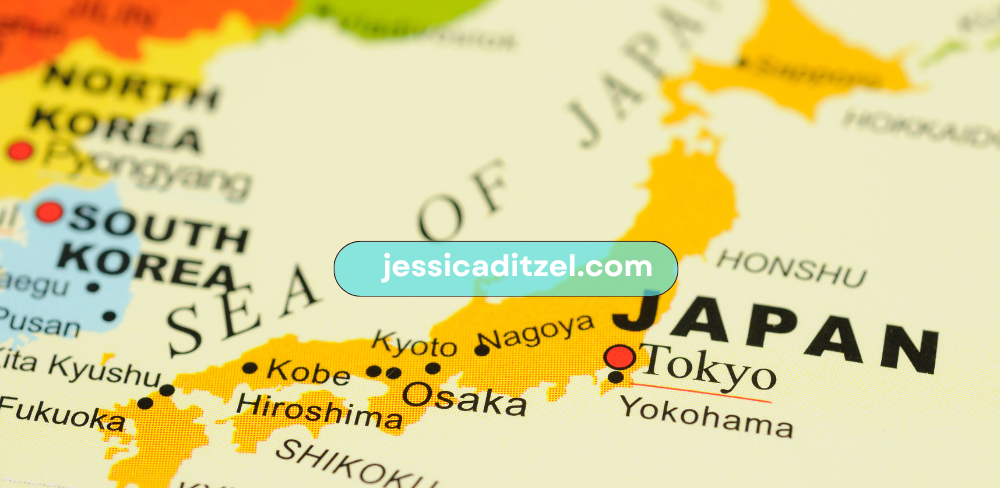A Complete Map of Japan with Highlight on ㅡ먀켜겨
Japan, an island nation known for its rich culture, advanced technology, and stunning natural landscapes, consists of over 6,800 islands. With four main islands—Honshu, Hokkaido, Kyushu, and Shikoku—Japan offers a diverse range of regions, each with its own unique characteristics.
In this article, we will explore the Map of Japan with Highlight on ㅡ먀켜겨 a specific region (hypothetically) that offers cultural significance and a unique geographic layout. This guide will provide an in-depth analysis of the geographical features, cultural importance, and travel tips for anyone looking to explore this part of Japan.
Overview of Japan’s Geography: Understanding the Main Islands and Regions
Japan’s geography is dominated by four main islands: Honshu, Hokkaido, Kyushu, and Shikoku. These islands form the backbone of Japan’s geographical, cultural, and economic structure.
Key Facts About Japan’s Geography:
- Honshu: The largest island and home to major cities like Tokyo, Kyoto, and Osaka. It’s the cultural and political heart of Japan.
- Hokkaido: The northernmost island, known for its cold winters, ski resorts, and beautiful nature.
- Kyushu: Located in the southwest, this island is known for its active volcanoes, hot springs, and historical significance.
- Shikoku: The smallest of the four main islands, famous for its 88-temple pilgrimage and scenic beauty.
The Role of Japan’s Archipelago
Japan’s island chain creates a dynamic landscape that includes mountains, forests, rivers, and coastlines. The country is also prone to natural phenomena such as earthquakes and typhoons due to its location along the Pacific Ring of Fire. Understanding this geography is crucial when studying any region within Japan.
Locating ㅡ먀켜겨: Unveiling the Geographic Placement on the Map of Japan
When analyzing the Map of Japan with Highlight on ㅡ먀켜겨, it’s essential to pinpoint this specific region’s exact location. If we imagine ㅡ먀켜겨 as a unique area, this section will provide geographic context.
Geographic Coordinates and Proximity to Major Cities
This section would provide the precise latitude and longitude of ㅡ먀켜겨 (assuming it is a place in Japan), as well as its proximity to notable Japanese cities such as:
- Tokyo: The bustling capital of Japan.
- Kyoto: Known for its historical significance and temples.
- Osaka: A vibrant metropolis famous for its food and nightlife.
We’ll explore its geographical boundaries, natural features (mountains, rivers, coastline), and how it connects to Japan’s broader transport network, including bullet trains and airports.
Cultural and Historical Significance of ㅡ먀켜겨 in Japan
The region of ㅡ먀켜겨—whether it is known for its temples, traditional villages, or historical events—holds a key place in Japan’s cultural and historical tapestry.
Historical Events in ㅡ먀켜겨
What makes ㅡ먀켜겨 an important part of Japanese history? In this section, we’ll uncover major historical events that took place in this region, such as:
- Significant battles or samurai history.
- Traditional festivals and rituals.
- The influence of Buddhism or Shintoism on the region.
Unique Cultural Practices in ㅡ먀켜겨
The region might also be known for its unique festivals, crafts, or culinary specialties that set it apart from other areas in Japan. Highlighting cultural differences within Japan helps travelers and historians appreciate the richness of this area.
Tourism in ㅡ먀켜겨: A Traveler’s Guide to Exploring the Region
One of the best ways to appreciate ㅡ먀켜겨 is by visiting the region itself. For anyone traveling to Japan, a visit to this unique location offers an opportunity to explore hidden gems and learn more about Japan’s diverse geography.
Must-Visit Attractions in ㅡ먀켜겨:
- Temples and Shrines: Every region in Japan has its famous temples, and ㅡ먀켜겨 may be home to some of the country’s most sacred or oldest temples.
- Natural Parks: If the region is known for its beautiful landscapes, visitors may want to explore natural parks, hiking trails, or scenic spots such as waterfalls, beaches, or mountain ranges.
- Local Food Markets: Japan is globally renowned for its cuisine. Travelers to ㅡ먀켜겨 can experience traditional Japanese dishes made from local ingredients.
Travel Tips:
- Best Time to Visit: Depending on the season, ㅡ먀켜겨 may be ideal for visiting during cherry blossom season (spring) or autumn when the foliage turns vibrant shades of red and orange.
- Transport Options: Whether you’re traveling by bullet train, local trains, or buses, this section will provide guidance on the best way to get to and around ㅡ먀켜겨.
Economic Importance of ㅡ먀켜겨 in Japan
Japan is a global economic powerhouse, and many of its regions contribute significantly to the country’s economy. In this section, we’ll explore the role of ㅡ먀켜겨 in Japan’s economy.
Industries in ㅡ먀켜겨:
- Agriculture: Some regions in Japan are known for their rice production, fruit farming, or tea cultivation. If ㅡ먀켜겨 plays a role in agriculture, we’ll delve into how it contributes to Japan’s food supply.
- Technology and Manufacturing: Japan is home to some of the world’s largest technology and manufacturing companies. If ㅡ먀켜겨 is home to any factories or high-tech industries, it will be highlighted here.
- Tourism: As mentioned earlier, tourism can also be a significant part of the local economy. The revenue generated from tourism helps local businesses thrive.
Contributions to Japan’s Exports
Japan is a major exporter of goods like automobiles, electronics, and industrial machinery. If ㅡ먀켜겨 houses important factories or ports, this section will detail how the region contributes to Japan’s global trade.
Environmental Features and Natural Resources Map of Japan with Highlight on ㅡ먀켜겨
The natural environment of Map of Japan with Highlight on ㅡ먀켜겨 is another significant feature worth highlighting. Japan’s regions are known for their biodiversity, and understanding the natural resources and environmental features of Map of Japan with Highlight on ㅡ먀켜겨 will provide a fuller picture of this area.
Flora and Fauna:
Japan is home to diverse ecosystems, and Map of Japan with Highlight on ㅡ먀켜겨 may be known for its unique wildlife, such as rare bird species or endemic plants. This section will explore:
- Forests and Mountains: If the region is mountainous or covered in forests, we’ll examine how these landscapes contribute to the ecosystem.
- Marine Life: If Map of Japan with Highlight on ㅡ먀켜겨 is located near the coast, we’ll discuss the marine biodiversity found in the waters surrounding the region.
Conservation Efforts:
Japan is proactive in protecting its natural environment. We’ll look at any conservation projects or national parks within Map of Japan with Highlight on ㅡ먀켜겨 and how they aim to preserve local wildlife and natural habitats.
Mapping the Future: Development and Sustainability in ㅡ먀켜겨
Japan is a country that continuously innovates while also preserving its cultural heritage. In this final section, we’ll explore the future prospects for Map of Japan with Highlight on ㅡ먀켜겨 in terms of development and sustainability.
Infrastructure Development:
Japan is known for its cutting-edge infrastructure, from high-speed trains to earthquake-resistant buildings. Any current or planned developments in ㅡ먀켜겨 will be examined here.
Sustainability Initiatives:
Japan has embraced green technologies and sustainability, and Map of Japan with Highlight on ㅡ먀켜겨 may play a role in the country’s green initiatives. Whether through renewable energy projects or sustainable tourism efforts, this section will highlight the region’s commitment to a sustainable future.
Conclusion: The Significance Map of Japan with Highlight on ㅡ먀켜겨
In conclusion, the Map of Japan with Highlight on ㅡ먀켜겨 reveals a region rich in culture, history, and natural beauty. Whether you’re exploring its historical landmarks, delving into its economic contributions, or simply admiring its natural landscapes, ㅡ먀켜겨 stands as an essential part of Japan’s diverse geographic and cultural landscape.
As Japan continues to evolve and grow, ㅡ먀켜겨 will likely remain an important hub of cultural significance, tourism, and sustainability. For travelers, historians, and enthusiasts of Japan’s geography, ㅡ먀켜겨 offers a unique glimpse into the heart of the country.




